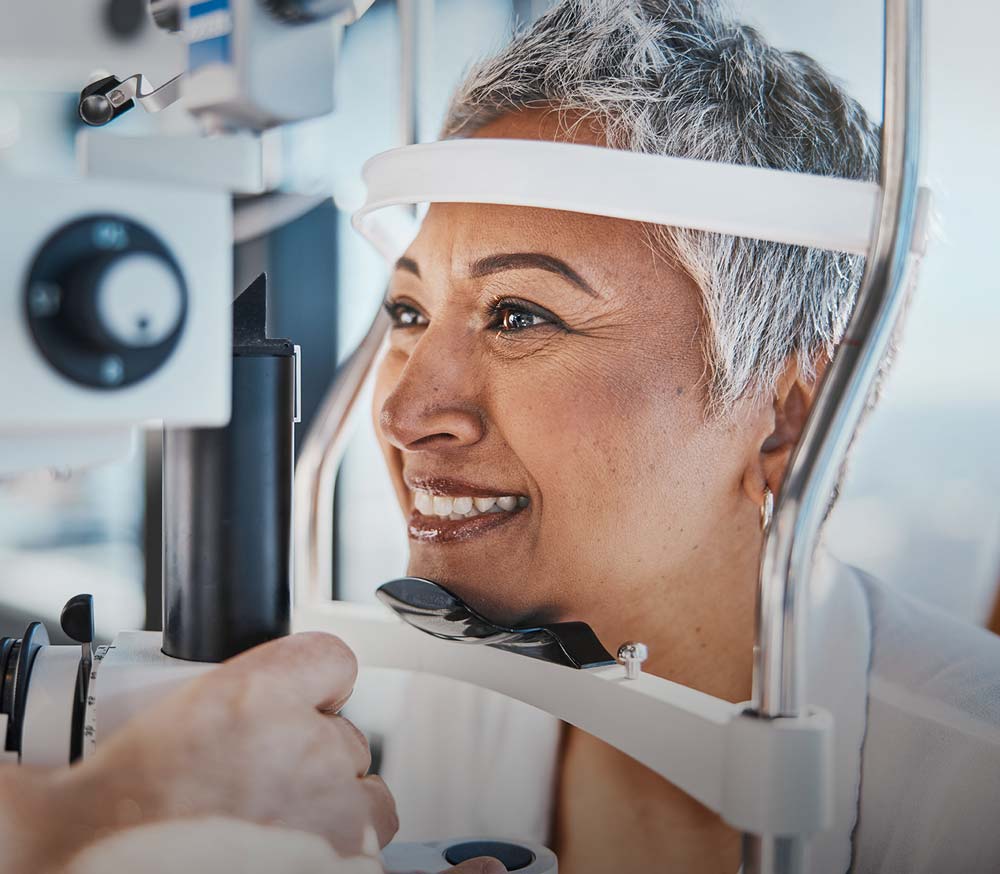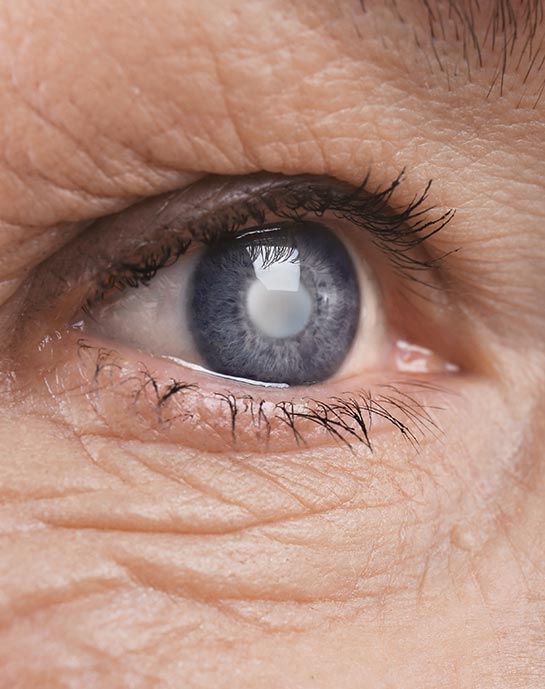Cataract Center

Cataracts develop due to a protein buildup on the eye’s natural lens, leading to cloudiness and vision impairment. This clouding blocks and distorts the passage of light through the eye, resulting in blurry or diminished vision. Cataracts can make everyday tasks like reading, driving, and recognizing faces more challenging. While the exact cause of this protein buildup remains unclear, factors such as age, UV exposure, smoking, and certain medical conditions, including diabetes, can increase the risk of cataract formation.
At Westlake Eye Specialists, our experienced Austin Cataract Surgeons are dedicated to offering comprehensive eye evaluations to detect cataracts early and recommend personalized treatment options. Our advanced surgical techniques, such as the Light Adjustable Lens and NGenuity® 3D cataract surgery, provide exceptional visual outcomes. With our state-of-the-art OBS Surgical Suite in South Austin, you’ll receive the highest level of care, tailored to your unique needs.
Whether you’re experiencing early signs of cataracts or significant vision changes, our team is here to help you restore your sight and improve your quality of life. Contact us today to schedule a cataract consultation with one of our expert cataract surgeons in Austin.

Types of
Cataracts
At Westlake Eye Specialists, we are dedicated to providing exceptional cataract care throughout Central Texas, with locations in Westlake, South Austin, Killeen, Kyle, and New Braunfels, TX. Cataracts are a common condition, particularly Age-Related Cataracts, which develop naturally as we age. By age 75, nearly 70% of individuals experience vision impairment caused by cataracts. Our expert Austin Cataract Surgeon, Dr. Zarmeena Vendal, offers state-of-the-art cataract treatments tailored to your specific needs.
Age-Related Cataracts can lead to cloudy vision, glare sensitivity, and difficulty with daily tasks. Early diagnosis is key, and our team at Westlake Eye Specialists provides thorough eye exams and personalized treatment plans to help restore clear vision.
We also specialize in treating Congenital Cataracts, which may develop in infants or young children due to infections during pregnancy or genetic conditions. These cataracts require specialized care to ensure the best visual outcomes. Dr. Vendal brings years of experience treating congenital cataracts, providing compassionate and effective care for patients of all ages.
Other types of cataracts can arise from various health conditions. Secondary Cataracts are often linked to diseases such as diabetes or prolonged use of medications like corticosteroids. Long-term exposure to UV rays, toxic substances, and radiation can also trigger cataracts. Additionally, Traumatic Cataracts may form after an eye injury, emphasizing the importance of immediate care.
As a trusted Austin Cataract Surgeon, Dr. Vendal performs advanced procedures, including Light Adjustable Lens implantation and NGenuity® 3D cataract surgery, at our South Austin Surgical Suite and other convenient locations. No matter which of our Westlake, Killeen, Kyle, or New Braunfels offices you visit, you can expect cutting-edge treatment and personalized care designed to restore your vision.
If you or a loved one are experiencing symptoms of cataracts or have been diagnosed, reach out to Westlake Eye Specialists to schedule a consultation with Dr. Zarmeena Vendal at one of our Central Texas locations. Trust us for the latest in cataract surgery and eye care to help you regain clear, vibrant vision.
Some risk factors for Cataracts include:
- Cigarette smoking
- Medications such as corticosteroids
- Eye injuries
- Sun exposure
- Diabetes
- Obesity
- Heavy alcohol consumption
- Over the age of 65
Cataracts often form slowly and cause few symptoms. When symptoms are present, they can include:
- Vision that is cloudy, blurry, foggy or filmy
- Sudden nearsightedness
- Changes in the way colors are seen, particularly the color yellow
- Problems driving at night because oncoming headlights are distracting
- Problems with glare
- Double vision
- Sudden temporary improvement in close-up vision

